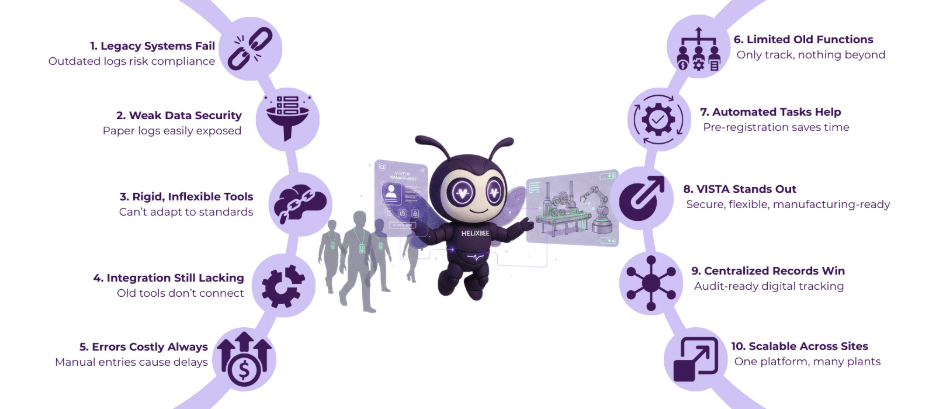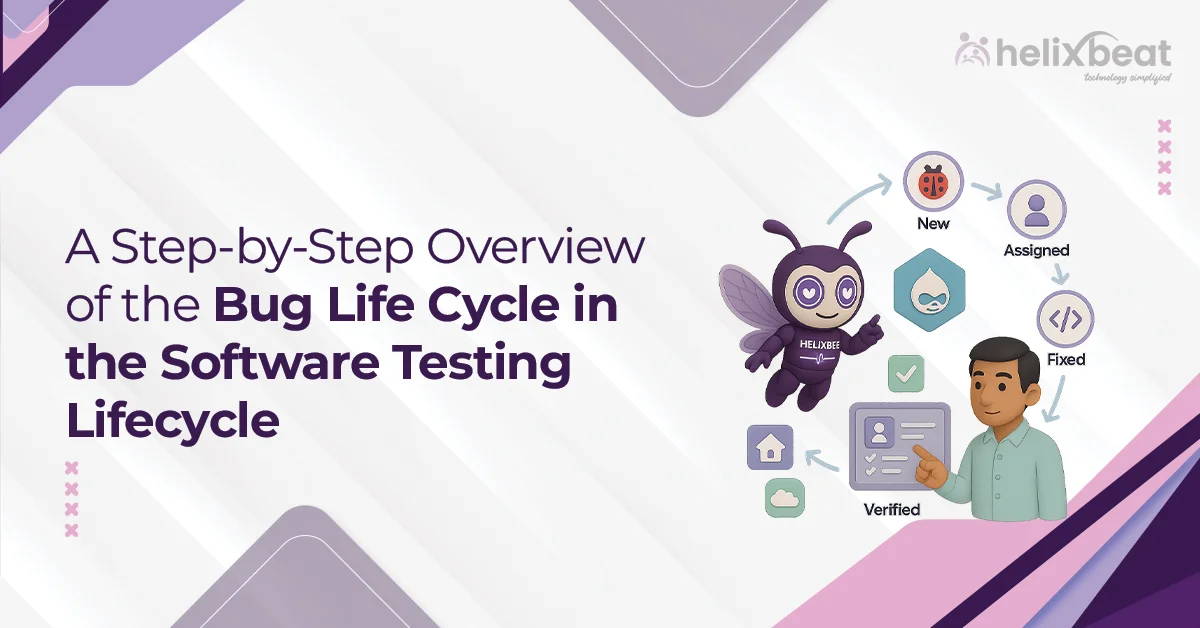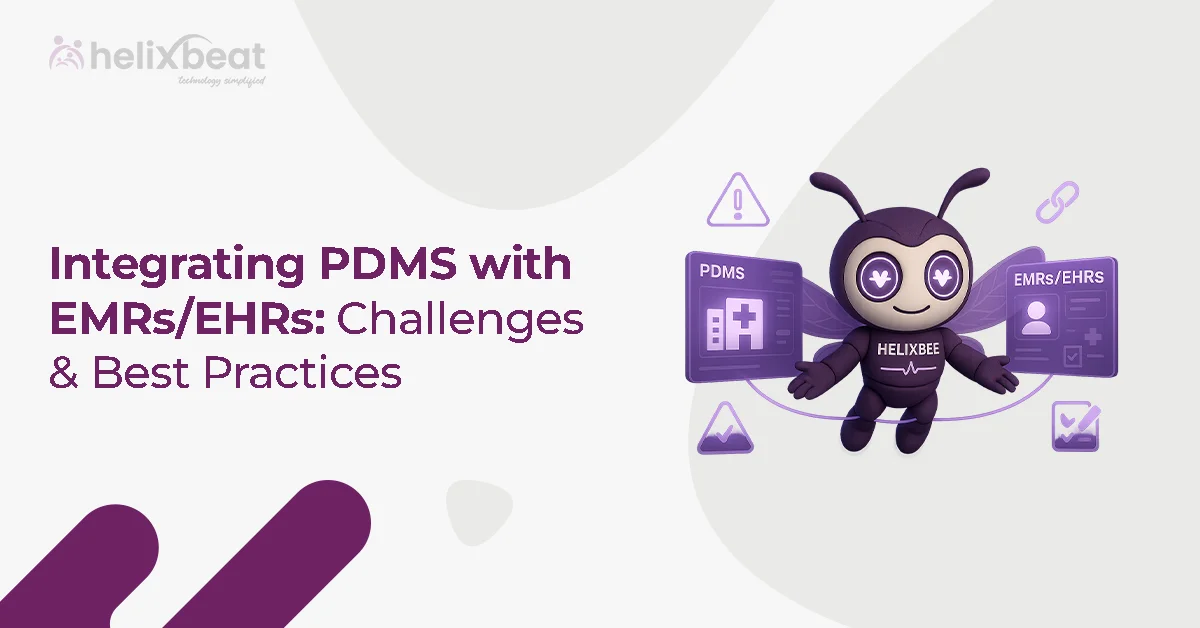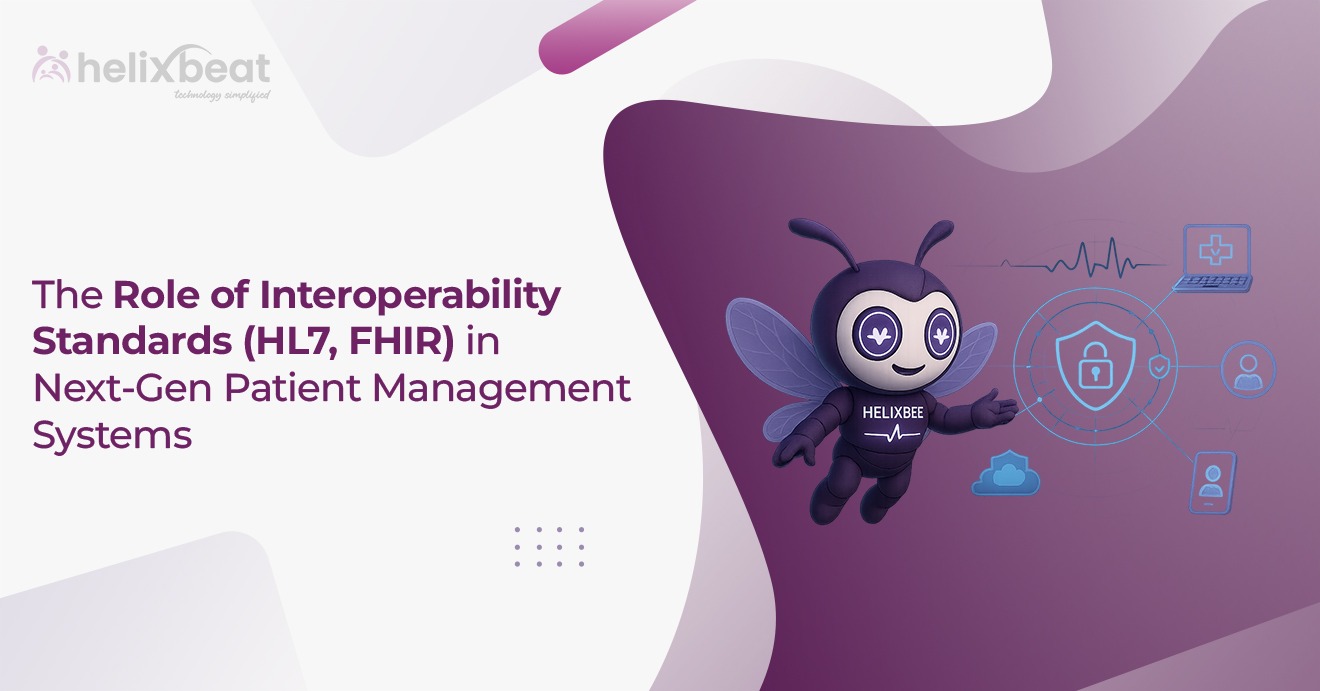Around 50% of software projects fail because bugs aren’t managed properly. This statistic shows just how important it is to track and resolve bugs efficiently during development. Within the software testing lifecycle, there are several stages designed to ensure the software meets high-quality standards, and the bug life cycle is one of the most critical parts.
The bug life cycle tracks a bug from the moment it’s found until it’s fixed. If this process isn’t handled well, it can lead to delays, overlooked issues, or poor software performance. For example, Microsoft has a structured bug life cycle for Windows development, ensuring that bugs are identified and fixed quickly, leading to more reliable products.
In this blog, we’ll break down the key stages of the bug life cycle in software testing and explain how mastering this process can improve both product quality and project success.

Table of Contents
What is Bug Life Cycle?
The bug life cycle refers to the process that a bug or defect goes through from the moment it is identified to when it is resolved and closed. This life cycle helps software teams systematically track and manage bugs, making sure no issue is overlooked. It typically includes stages like discovery, reporting, assigning, fixing, retesting, and finally closing the bug.
If a bug reappears or wasn’t fixed properly, it may be reopened for further work. Essentially, the bug life cycle provides a clear path for handling defects, ensuring that software is delivered with minimal issues, better quality, and a smoother user experience.
Why Every QA Team Must Understand the Bug Life Cycle
1. Maintain Better Communication Among Teams
Understanding the bug life cycle helps improve communication between the QA team, developers, and other stakeholders. When everyone is on the same page about the status of a bug, it prevents confusion and ensures that issues are addressed promptly. Clear communication is key to fixing bugs quickly and efficiently, ensuring that the software development process stays on track.
2. Faster Bug Resolution
When QA teams understand the bug life cycle, they can quickly identify where a bug is in the process and take appropriate action. Whether it’s escalating an issue to the right team or verifying that a fix works, knowing each stage ensures faster resolutions and smoother progress. This ultimately leads to fewer delays and a more reliable final product.
3. To keep High Software Quality
By tracking and managing bugs throughout their entire life cycle, QA teams can ensure that software meets high-quality standards. Understanding the bug life cycle allows teams to prioritize critical issues, focus on the most impactful bugs, and ensure that the product is thoroughly tested before release. This process leads to better software quality and a more satisfying user experience.
8 Crucial Stages of the Bug Life Cycle
The bug life cycle is a structured process that ensures bugs are properly tracked, managed, and resolved. Each stage plays a critical role in making sure that the software is bug-free before it reaches the end user. Here’s a breakdown of the eight crucial stages of the bug life cycle in software testing:
1. New: The process begins when a bug is reported, typically by a QA tester or sometimes even by the end user. At this stage, the bug is logged into the bug tracking system with basic information like a description, the environment, and the steps to reproduce the issue. This is the first time the bug enters the life cycle, and it’s crucial that it is clearly documented so it can be reviewed and assigned.
2. Assigned: Once the bug is reported, it is assigned to the relevant developer or team responsible for fixing it. The developer reviews the bug’s details and decides on the necessary steps to resolve the issue. Assignment can also include prioritizing the bug based on its severity and impact on the system.
3. Open: In this stage, the developer begins actively investigating the bug, trying to identify its root cause. The bug is now considered “open” because the development team is working on fixing it. During this phase, the developer might need to reproduce the bug, debug the application, and write code changes to address the issue.
4. Fixed: After the developer has found and resolved the issue, the bug is marked as “fixed.” At this point, the developer believes that the issue no longer exists in the system, and the fix is ready for QA to verify. The bug enters the “fixed” stage when the developer commits the changes and pushes the new code to the staging environment for testing.
5. Retest: Once the bug has been fixed, the QA team needs to retest the software to verify that the fix works as expected and that the bug is no longer present. The retest stage is crucial because it ensures that the issue has been resolved without introducing new problems. QA might also test if the fix impacts other parts of the system to ensure the stability of the software.
6. Closed: If the retest is successful and the bug no longer appears in the system, the bug is marked as “closed.” This indicates that the bug has been fully addressed and verified. Closing a bug means that it has been resolved satisfactorily and there is no further action required. In some cases, bugs can be closed after the fix has passed user acceptance testing (UAT).
7. Reopened: Sometimes, even after a bug is marked as “closed,” it may reappear due to unforeseen issues. If QA finds that the bug was not completely fixed or has resurfaced, the bug is reopened. At this stage, the development team is required to go back to the drawing board, investigate further, and implement a new fix.
8. Rejected: Not all reported issues are actual bugs. Some reports may be misunderstandings, misconfigurations, or intended features rather than defects. In these cases, the bug is marked as “rejected.” Rejection can occur if the issue is not reproducible, if the behavior is part of the expected software functionality, or if the bug doesn’t meet the criteria for a valid defect.
By following the bug life cycle, teams can systematically solve issues and improve the software’s quality.
How the Bug Life Cycle Fits Into the Software Testing Lifecycle
The bug life cycle is an integral part of the software testing lifecycle (STLC) as it directly influences the quality and efficiency of the testing process. In the STLC, testing phases like requirement analysis, test planning, test design, and test execution often lead to the discovery of bugs. Once a bug is identified during test execution, it enters the bug life cycle, starting with logging and assignment to the development team. The bug is then fixed, retested, and closed if resolved.
Throughout the software testing lifecycle, the bug’s progress is tracked, ensuring it is addressed before the final product is released. This cycle not only ensures that bugs are quickly handled but also helps teams prioritize issues based on severity and impact, ensuring that the software remains stable and meets quality standards at every stage.
Common Challenges in Software Testing Lifecycle
The software testing lifecycle (STLC) is crucial for ensuring software quality, but it comes with its own set of challenges. Here are some common issues teams face:
- Unclear Requirements: Ambiguous or incomplete requirements make it difficult to design accurate test cases.
- Inadequate Test Coverage: Insufficient testing coverage can lead to undetected bugs or issues.
- Communication Gaps: Miscommunication between developers and QA teams can result in delayed fixes and misunderstandings.
- Limited Resources: Constraints on time, budget, or personnel can impact the thoroughness and effectiveness of testing.
- Handling Complex Environments: Testing in diverse, complex environments with multiple configurations can be time-consuming and error-prone.
Helixbeat’s Expert Tips for Optimizing the Software Testing Lifecycle
Helixbeat offers valuable insights for optimizing the software testing lifecycle (STLC), ensuring faster, more efficient testing processes and better-quality products. Here are some expert tips to enhance your testing practices:
1. Implement Continuous Integration (CI) and Continuous Testing (CT)
By integrating CI and CT into your workflow, you can automate testing at every stage of development. This ensures that bugs are caught early, reducing the risk of defects making it to production. Automated tests run with every code change, providing immediate feedback and accelerating the overall testing process.
2. Prioritize Test Automation
Not all tests need to be manual. Focus on automating repetitive and time-consuming test cases, such as regression tests, to speed up the process. Automated tests can be executed faster, more frequently, and with greater consistency, enabling teams to focus on complex scenarios that require human judgment.
3. Focus on Early Bug Detection
Early detection of bugs in the software testing lifecycle saves time and resources. Involve QA early in the development process, ideally during the planning or requirement gathering stages. This approach allows testers to identify potential issues before they become expensive to fix.
4. Encourage Collaboration Between Development and QA Teams
Effective collaboration between developers and QA teams is essential for resolving issues faster. Regular communication, shared goals, and joint problem-solving efforts streamline bug resolution and improve software quality. Pairing developers with testers ensures faster feedback loops and higher-quality deliverables.
Fial Thoughts
Understanding the software testing lifecycle and the bug life cycle is key to build high-quality software. At Helixbeat, our testing services are designed to streamline these processes, helping you identify and resolve bugs early, saving time and resources.
With our expertise in continuous integration, automated testing, and efficient bug tracking, we make sure your product is reliable and user-friendly.
Let Helixbeat’s testing services help you optimize your software testing process, reduce time to market, and deliver top-quality products that satisfy your user’s need. Reach out to us now for high-standard testing service.
FAQ
1. What is a bug in short?
A bug is an error or flaw in a software application that causes it to behave unexpectedly or incorrectly, often leading to malfunctions or crashes.
2. What is the software testing lifecycle?
The software testing lifecycle (STLC) refers to a series of phases that a software product goes through during testing, from the initial planning and design stages to executing tests and fixing bugs before final release.
3. What are the 4 stages of software testing?
The four main stages of software testing are:
- Planning and Preparation: Identifying test cases and planning the testing process.
- Test Execution: Running the tests and reporting any bugs found.
- Bug Fixing: Developers fix the identified bugs, and the testing process continues.
- Verification and Closure: Verifying that the bugs are fixed and the product is ready for release.
4. How do you prioritize bugs in the software testing process?
Bugs are prioritized based on their severity and impact on the system. Critical bugs that affect core functionalities are fixed first, followed by medium and low-priority issues, which may not affect the main system but still need attention.
5. What is SDLC and STLC?
SDLC (Software Development Life Cycle) refers to the overall process of creating software, including planning, design, development, testing, deployment, and maintenance. STLC (Software Testing Life Cycle) focuses specifically on the testing phase within the SDLC, involving various steps to ensure the software meets quality standards before release.














